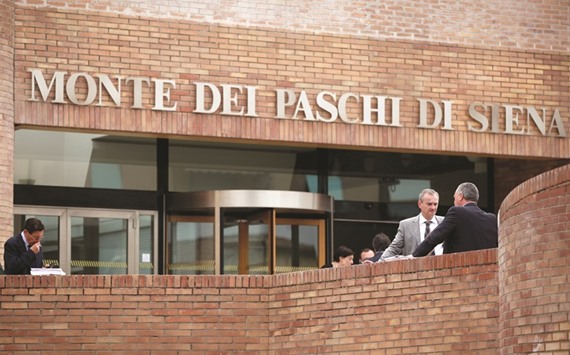Europe’s big idea for ending the era of public bailouts is at risk of flunking its first major test: Banca Monte dei Paschi di Siena.
The Italian government wants to short-circuit a system European Union lawmakers spent years building to ensure that investors, not taxpayers, foot the bill for failing banks. The outlines of a rescue for Monte Paschi were announced on December 22, and while some aspects of the plan remain hazy, the challenge to the EU’s efforts to sever the link between banks and states is clear.
“The Italian rescue plans are a litmus test,” said Sven Giegold, a German lawmaker in the European Parliament. The European Commission, the EU’s executive arm, “would set a dangerous precedent if it approves them,” he said. “Monte dei Paschi could become the start of a new series of European bailouts.”
European Union governments used nearly €2tn ($2.1tn) in state aid to rescue the financial sector from 2008 to 2014. New rules enacted since the crisis make it much harder for states to step in, especially to shore up viable lenders.
The first hurdle Italy has to overcome is the assumption in EU law that the need for “extraordinary public financial support” signals a bank is “failing or likely to fail” and should be wound down. Getting around that to inject funds into a solvent bank is possible, but the bar is high.
A “precautionary and temporary” recapitalisation by the state is allowed to address a capital shortfall identified in a stress test. The European Central Bank, which oversees euro-area lenders, told Monte Paschi after the most recent stress test in July to plug a hole in its balance sheet by raising €5bn in the market. On December 22, the bank admitted that its efforts had failed.
A government must demonstrate that precautionary support is needed to “remedy a serious disturbance in the economy” and to “preserve financial stability.” And this precautionary funding is subject to EU state-aid rules, which normally require shareholders and junior creditors to share losses.
This is the route the Italian government wants to go down. Holders of Monte Paschi’s Tier 1 securities will get stock that represents 75% of the nominal value of the bonds, while Tier 2 bonds will be converted at 100% of nominal value, the government said. The Treasury will later offer to compensate some investors by offering them senior bank bonds in exchange for the shares they received through conversion.
Prime Minister Paolo Gentiloni said EU officials agree with the plan, though the European Commission on Friday said only that it would “work with the Italian authorities and the responsible supervisory authorities to confirm if conditions are met.”
This isn’t Monte Paschi’s first state-aid rodeo. Italy bailed it out twice after the crisis when the lender failed stress tests, posted billions of euros of losses and creaked under a mountain of bad loans.
The bank’s track record has convinced some observers that it should be put into resolution, not bailed out. That would require a determination by the ECB that Monte Paschi is insolvent.
“A bank that has proved multiple times that it has no reason to exist should exit the market to allow stronger competitors to survive,” said Lutz Roehmeyer, a fund manager at Landesbank Berlin Investment in Berlin. “Permanent rescues make it impossible to clean up the market and achieve risk-adequate pricing.”

Pedestrians stand outside the administrative offices of Banca Monte dei Paschi in Siena. The outlines of a rescue for Monte Paschi were announced on December 22, and while some aspects of the plan remain hazy, the challenge to the EU’s efforts to sever the link between banks and states is clear.


